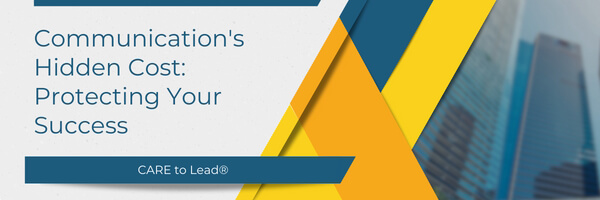As you read through today’s newsletter, please remember that what follows might not only save you time and effort but also prevent financial losses, reputational damage, and missed opportunities. Yes, it’s that important. We’re uncovering the hidden communication pitfalls that have caused even the most self-assured leaders substantial losses – the seemingly straightforward yet intricate realm of communication!
Welcome to The Art of Precision and Strategic Clarity!
We all know that using clear and simple language is important for effective communication. After all, you’ve probably spent a long time developing the strategy, so why shouldn’t the way you communicate it be just as clear?
To ensure that you are as clear and strategic as you can be, here are some advanced strategies to consider:
Craft a Leadership Lexicon: Develop a customized lexicon for your organization, a compilation of words and phrases that perfectly align with your strategic objectives. This lexicon serves as the cornerstone of your communication strategy, guaranteeing that each word carries strategic importance. However, it’s crucial to ensure that every senior leadership team member fully understands the meaning of each word in your lexicon and knows the appropriate context in which to use them. Subtle nuances can have an impact on results.
Don’t Forget The Subtle Art of Non-Verbal Communication: Effective leaders recognize that communication goes beyond mere words. Non-verbal cues, including body language, tone, and facial expressions, significantly impact conveying your message accurately. In fact, sometimes you’re saying more with your non-verbal communication than with your actual words. Here are some tips to help you become a master of the subtle art of non-verbal communication:
- Body Language Alignment: When addressing your team or partners, align your body with the message you’re delivering. For example, face your team to show unity if you’re discussing a collaborative project. Slightly leaning forward demonstrates engagement and interest.
- Maintain Eye Contact: Keeping steady eye contact is a sign of confidence and trustworthiness. It lets others know you’re fully present and focused on the conversation. However, remember not to overdo it; excessively prolonged eye contact can be intimidating.
- Gestures and Mirroring: Use purposeful gestures to highlight important points. Mirroring the body language of your conversation partner helps establish rapport and connection.
- Facial Expressions: Your facial expressions should align with the message you’re conveying. A warm smile can diffuse tension, while a furrowed brow may indicate concern or seriousness.
Mastering these non-verbal cues not only enhances your communication but also deepens your impact as a leader. These subtle signals can speak volumes and significantly influence how your message is received.
Strategic Listening: I know, I know, you’re tired of hearing about active listening, right? Well, I will ask you to go further and move beyond active listening to strategic listening. Listen not only for the information being conveyed but also for any hidden agendas, unspoken concerns, and potential areas of alignment. By engaging in strategic listening, you will be able to customize your responses better and enhance the effectiveness of your interactions. (Pro tip: keep an eye on their body language, too; a lot of communication is happening there.)
The Neuroscience of Influence: Explore the neuroscience behind persuasive communication. Understand how the brain processes information and tailor your communication to resonate with your audience on a neurological level. By understanding the neuroscience of influence, you can shape your communication to resonate on a neurological level.
- Appeal to Emotions: Researchers have identified that emotions heavily influence decision-making.1 When making a persuasive argument, connect with your audience on an emotional level.
- Neurological Synchronization: Researchers have found that during engaging conversations, the brains of the speaker and listener often synchronize.2 This phenomenon creates a deep sense of connection and trust.
- Visual Storytelling: The brain processes visual information faster and retains it longer than text. Incorporate visual storytelling into your presentations to make your message more memorable.
By incorporating these fascinating neuroscience insights into your communication strategy, you can skillfully shape decisions, foster trust, and make your message even more memorable. These straightforward strategies perfectly align with the latest research and offer an exceptional competitive edge — and who wouldn’t want a competitive edge?
Feel free to reach out with questions or share your experiences as you implement these strategies.
- Jennifer S. Lerner, Ye Li, Piercarlo Valdesolo, Karim S. Kassam, Emotion and Decision Making Annual Review of Psychology 2015 66:1, 799-823
- Pérez, A., Carreiras, M. & Duñabeitia, J.A. Brain-to-brain entrainment: EEG interbrain synchronization while speaking and listening. Sci Rep 7, 4190 (2017). https://doi.org/10.1038/s41598-017-04464-4

